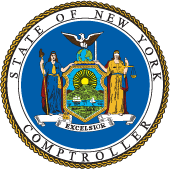Audit Objective
Did the Southwestern Central School District (District) Board of Education’s (Board) appointed claims auditor properly audit claims prior to payment?
Audit Period
July 1, 2023 – January 22, 2024
Understanding the Program
The audit of claims is often the last line of defense for preventing unauthorized, improper or fraudulent claims from being paid. A board of education (board) must audit the claims against a school district before they are paid or appoint a claims auditor to assume the board’s powers and duties to audit and approve claims. A proper claims audit ensures all claims are subjected to an independent, thorough and deliberate review that, among other things, determines that the school district complied with its written policies, and that each purchase was for a proper school district purpose.
The Board delegated its claims auditing duties to the Erie-2-Chautauqua-Cattaraugus Board of Cooperative Educational Services (BOCES) central business office (CBO).The BOCES CBO Manager assigned two BOCES employees to audit the District’s claims. These two employees were responsible for examining and allowing or rejecting all accounts, charges, claims or demands against the District.
The District’s 2023-24 budgeted appropriations totaled $33.1 million and, during the audit scope period, the District processed 1,467 claims totaling $24.2 million.
Audit Summary
The claims auditors did not properly audit all claims prior to payment. Of the 1,467 claims totaling $24.2 million, we reviewed 266 claims1 totaling $7.7 million (some claim packets contained multiple exceptions) and determined that:
- 230 claims (86 percent) totaling $6.5 million should not have been approved by the claims auditors for payment because the claim packets did not contain sufficient supporting documentation to allow the claims auditor to determine whether the claim was a valid legal obligation, a proper charge against the District, properly approved, mathematically correct, or in compliance with the District’s purchasing policies.
- 14 BOCES claims (5 percent) totaling $5.2 million were not properly audited as it was the Board’s responsibility to do so because the claims auditors were employees of BOCES. When the Board audits these claims, it avoids the appearance of a conflict of interest that would result from the appointed claims auditor reviewing their own or their employer’s claims for payment.
While we reviewed each of the 266 claims and were able to determine that each claim was for a proper District purpose, when an inadequate audit of claims is performed, there is an increased risk that improper or unsupported payments could be made and not be detected or corrected.
In addition, the Board did not appropriately appoint the claims auditor. The Board inappropriately appointed the BOCES CBO as the claims auditor instead of a specific individual.
The report includes six recommendations that, if implemented, will improve the effectiveness of the District’s claims audit process. District officials agreed with our recommendations and have initiated or indicated they planned to initiate corrective action.
We conducted this audit pursuant to Article V, Section 1 of the State Constitution and the State Comptroller’s authority as set forth in Article 3 of the New York State General Municipal Law. Our methodology and standards are included in Appendix C.
The Board has the responsibility to initiate corrective action. A written corrective action plan (CAP) that addresses the findings and recommendations in this report must be prepared and provided to our office within 90 days, pursuant to Section 35 of the New York State General Municipal Law, Section 2116-a (3)(c) of the New York State Education Law and Section 170.12 of the Regulations of the Commissioner of Education. To the extent practicable, implementation of the CAP must begin by the end of the next fiscal year. For more information on preparing and filing your CAP, please refer to our brochure, Responding to an OSC Audit Report, which you received with the draft audit report. The CAP should be posted on the District’s website for public review.
1 See Appendix C for more information on our sampling methodology.
